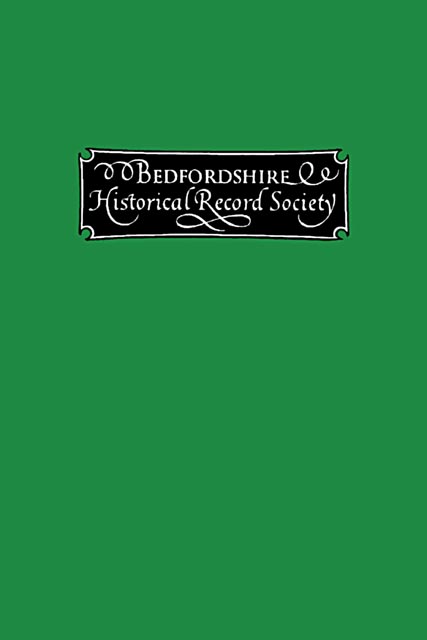Tithe at Pavenham, 1759/1760
Published online by Cambridge University Press: 14 July 2023
Summary
[Introductory note.—At a time when the liability of tithe-payers is being bitterly contested, Mr. Linnell's offer of documents, which illustrate the position 170 years ago, was particularly well-timed. These documents are preserved at Trinity College, Cambridge, and are published by permission. The first paper, a general report on the tithe of the parish dated 1759, was prepared by Mr. W. Elstobb of Cambridge. He and his father were both surveyors, interested in and writing on the drainage of the Fens. The younger man published “A Historical Account of the Great Level of the Fens called Bedford Level” in 1793, and acted as a Parliamentary Enclosure Commissioner for Felmersham in 1766. The second paper, almost certainly also by Mr. Elstobb, deals with a scheme by which the writer would rent the whole tithe from the College, and allow each farmer to ‘rent’ his own share of the tithe, that is, to pay yearly an agreed sum of money, in stead of the tithe being collected ‘in kind’ as sheaves or bushels or haycocks. But, beyond this purely parochial question, these documents record agricultural prices, produce, land-values, and conditions, which are of considerable interest for economic history. Until 1859, Pavenham was a chapelry attached to Felmersham church; both were granted in 1342 (Cal. Pat. R., 1340-43, 495/496) to King's Hall, which was eventually merged into Trinity College. The College thus became the ‘appropriate’ owner of the Great Tithe; in 1759 this tenth of grain, beans, pease, and hay, from freehold land was collected ‘in kind’ by an agent who paid to the College a fixed sum yearly, and made what he could out of the bargain. The nature of the Small Tithe, usually a part of the parson's income, was different in different villages, a tenth of such things as calves, lambs, piglets, fowls, wax, honey, fruit, etc.; in this case it was naturally drawn by the vicar of Felmersham from freehold land. For a not obvious reason, the vicar of Stevington drew both Great and Small Tithe from the copy holds.
A few comments may perhaps help the reader. The difference in the rents per acre (p. 100) of Open Field land (5s. to 5s. 6d.) and of enclosed land (20s.) explains the outcry for Parliamentary Enclosure about this period. Mr. John Hutchinson (p. 101) was vicar of Felmersham, 1756-1792.
- Type
- Chapter
- Information
- Publisher: Boydell & BrewerFirst published in: 2023



